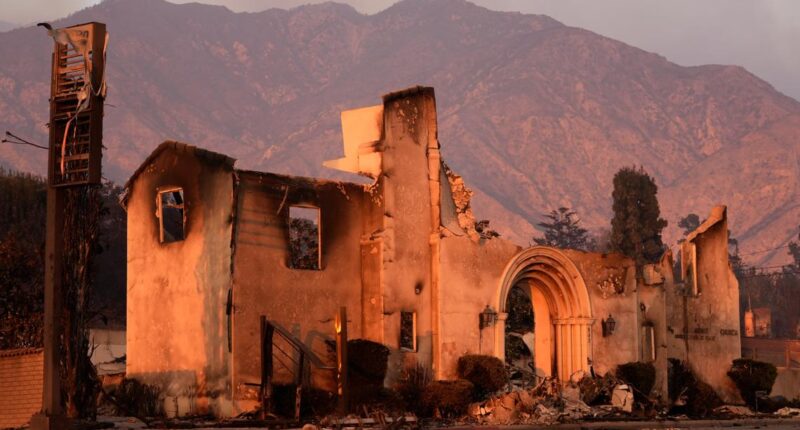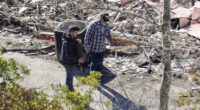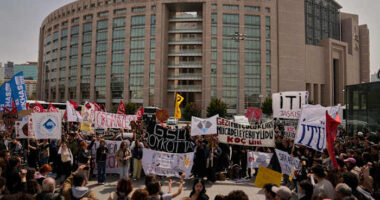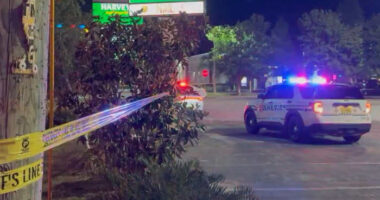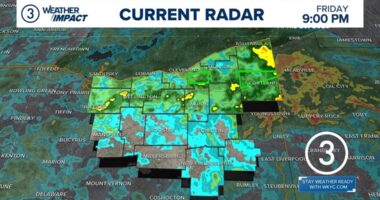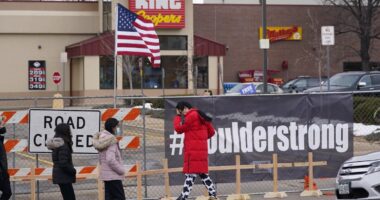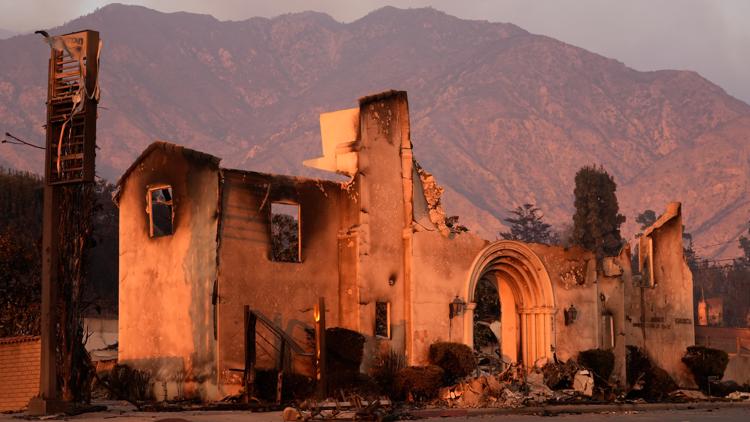
While talking of rebuilding can be a comfort for those eager for a return to normalcy, much remains unknown.
After one of the worst natural disasters in Southern California’s history, many families, business owners, and leaders in Los Angeles County are now faced with the daunting task of rebuilding and planning for the future.
In Altadena, northeast of Los Angeles, Alex Rosewood and her family suffered devastating losses, including the homes of her father, aunt, uncle, and cousin who lived nearby.
The fire claimed precious mementos that held deep sentimental value for Rosewood, such as her grandmother’s playing cards and unfinished quilt, her wedding photos, and heirlooms from her Navy veteran grandfather. These irreplaceable items were lost in the chaos as they fled the encroaching flames.
But Altadena remains home.
“We all plan to rebuild, for sure,” she said.
The traumatized region made it through Wednesday without another major fire breaking out, after forecasters had warned of another round of particularly dangerous winds.
Yet even with flames still leaping in two of the largest fires, which have killed 25 and destroyed more than 12,000 structures, government officials talked Wednesday of the epic job that will unspool over years: clearing Altadena, Pacific Palisades and other ravaged communities of toxic ash and debris, then rebuilding homes, restaurants, schools, boutiques, banks and houses of worship — all while finding financing for it all.
Because of the ongoing firefighting battle and the likelihood of dangerous refuse in burned areas, many anxious residents have yet to return to see what, if anything, is left of their homes. The losses range from multimillion-dollar ocean-view mansions to modest homes that once welcomed returning World War II GIs.
While talking of rebuilding can be a comfort for those eager for a return to normalcy, much remains unknown.
What will the new neighborhoods look like? Will fire-resistant materials and designs be used? Are more and wider roads needed to allow swifter evacuations and easier access for fire engines during future infernos?
In the coveted seaside hills, there always is the impulse to rebuild after fires — it’s happened many times. But there are inevitable questions about whether it’s sensible to keep rebuilding in known high-risk areas, especially in an age of climate change.
“It’s going to be a while before we can get in there and build anything,” said Michael Hricak, an adjunct professor of architecture at the University of Southern California., referring to the dangerous chemicals and rubble left behind.
As for new construction, “it’s not being tougher than Mother Nature. It’s being somewhat respectful of Mother Nature and knowing what the challenges are.”
“Are we just inviting another problem down the road?” Hricak said.
The fires struck at a challenging time, with the city in the midst of a post-pandemic transition that has reordered work life and left many downtown buildings with high vacancy rates.
Meanwhile, planning is underway to host the 2028 Olympics and the region contends with perhaps the nation’s worst homeless crisis — the latter had been Los Angeles Mayor Karen Bass’ priority before the fires broke out last week.
The government has not yet released damage estimates, but private firms have expect they will climb into the tens of billions and it could become the costliest fire disaster in U.S. history.
The Northern California community of Paradise, where the state’s deadliest wildfire killed 85 people in 2018, offers a glimpse into how painstaking and difficult recovery and rebuilding can be.
That fire destroyed about 11,000 homes — some 90% of the community’s structures. Four years later, as of last November, just about 3,000 homes and apartments have been rebuilt.
The town, which previously a population of 26,000, has struggled under high construction costs, expensive insurance premiums and the uncertainty over funds to be paid to people who lost homes by Pacific Gas & Electric, which was found liable for sparking the devastating blaze.
In Los Angeles — a city notorious for dense layers of bureaucracy and government red tape — Bass issued an executive order this week intended to clear the way for residents to rebuild quickly.
“As we prepare to make it through the rest of this emergency, we also have to start putting in place what we need to do to rebuild,” the mayor said Wednesday.
The federal government already has approved spending $100 million to remove paints, cleaners, asbestos, batteries and other household waste from the rubble before crews can begin clearing debris. Robert Fenton Jr., a regional administrator for the Federal Emergency Management Agency, called the plan a first step to getting people back in homes.
Elsewhere, the agency is handing out assistance to help people with short-term lodging.
Peter Dolan, who lived in Santa Monica, said he and his best friend both lost their apartments on the same day. They visited the disaster recovery center together to figure out their next steps.
“This is what I got,” the 55-year-old said, pointing to his outfit: a leather jacket, shorts and sneakers, the clothes he had on the day the flames hit.
Dolan didn’t have renter’s insurance, but he was able to apply for FEMA assistance and thinks he’ll get $750 and possibly his stay at a hotel covered for a few months.
Michele Baron and her daughter were among those who came to a recovery center in West Los Angeles to figure out how to get new birth certificates and social security cards.
Baron lost nearly everything when her Pacific Palisades apartment of 21 years burned to the ground. Her daughter made her way back to the property and salvaged a ring and pottery she made as a child.
Despite the trauma, the plan is to stay put.
“Now that I can go anywhere, I kind of don’t want to,” Baron said.
Associated Press writer Olga R. Rodriguez in San Francisco contributed.
